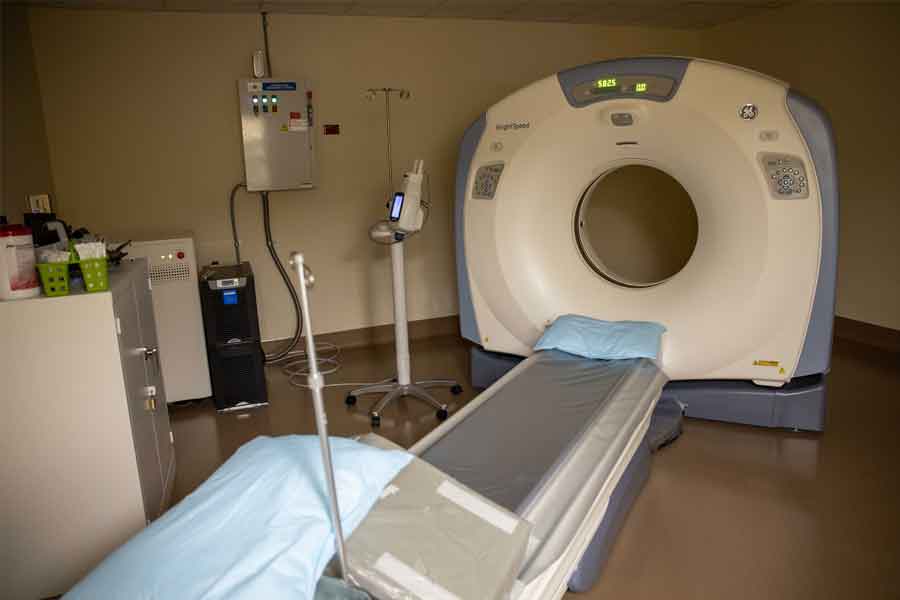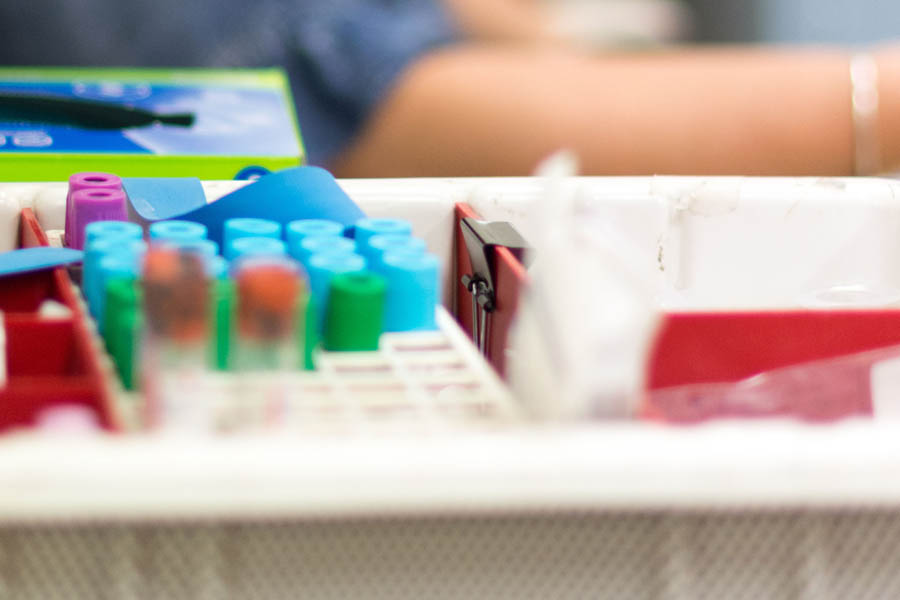
Diagnostics
 CT
CT
A "CT Scan" or "Cat Scan" stands for computed topography. These computer generated images are similar to an X-ray, but with several layers. Thus creating an internal, cross-sectional view of the body. This procedure is non-invasive, painless, and usually only takes a couple of minutes. You can expect to lie on a narrow table, similar to a gurney. The narrow table will pass through what looks like a giant, rotating donut. This is how the multi-layer images are taken. CT scans are helpful in diagnosing unexplained pain and/or disease of internal organs. A qualified technician will prepare you for the procedure and operate the CT machine. However, a medical doctor (Radiologist) will decipher the images. This can be done in-house or remotely depending on your facility and your health condition. Occasionally, intravenous dye is used during CT scans. This is dependent upon your condition and your doctor.
 X-RAY
X-RAY
X-Rays have been used for decades to diagnose broken bones, lung diseases, and traumatic injuries. This painless, non-invasive procedure can be done in most clinics, as well as the hospital. X-rays are a form of electromagnetic radiation that pass through solid objects. This is helpful when looking for air, fluid, masses, abnormalities, or fractures in various parts of the body. The exposure to radiation during an x-ray is minimal, however it is important to notify the technician if you are pregnant or could be pregnant. The technician may offer you a lead apron for protection during imaging, depending on the area being processed. Your doctor will discuss the results with you - often times immediately after the images are taken, depending on your condition.
 LABS
LABS
Laboratory services are used to collect and process human specimens. Specimens may be collected at the facility or at home and brought to the lab for processing. Blood or other instantly available specimens may be obtained on-site. A trained phlebotomist, nurse, or medical assistant is qualified to draw blood. A lab technician is also trained in processing those specimens. This may be done in-house, at the nearest hospital, or sent off to a higher-level lab depending on your condition. Laboratory services help doctors determine infection and/or metabolic status in the body, which contributes to a diagnosis.
 ULTRASOUND
ULTRASOUND
Another non-invasive method of medical imaging. Sonography is used to create a two-dimensional survey of internal structures. It is most commonly used in pregnancy, but is also used for detecting or measuring abnormalities within organs. A gel-like substance is placed directly on the skin, above area of the body being examined. Then a wand-like tool is applied to that skin and the image within is immediately projected on a computer screen. These images are difficult to interpret except to those trained. A doctor or sonographer will perform the scan. Timing of results depend on your condition and who is conducting exam.


